2024 Orbea Rallon
Wheel Size: 29’’ front / 27.5’’ or 29’’ rear
Travel: 167 mm rear / 170 mm front
Geometry Highlights:
- Sizes offered: S, M, L, XL
- Headtube angle: 63.5° / 64°
- Seat tube angle: 77° / 77.5°
- Reach: 480 / 485 mm (size Large)
- Chainstay length: 440 mm
Frame Material: Carbon fiber
Complete Bike Prices: $5,299 to $10,999
Blister’s Measured Weight (Rallon M-Team, size L): 32.9 lb / 14.9 kg
Test Location: Washington
Reviewers:
- Zack Henderson: 6’, 160 lbs / 183 cm, 72.6 kg
- David Golay: 6’, 170 lb / 183 cm, 77.1 kg
Test Duration: 4 months
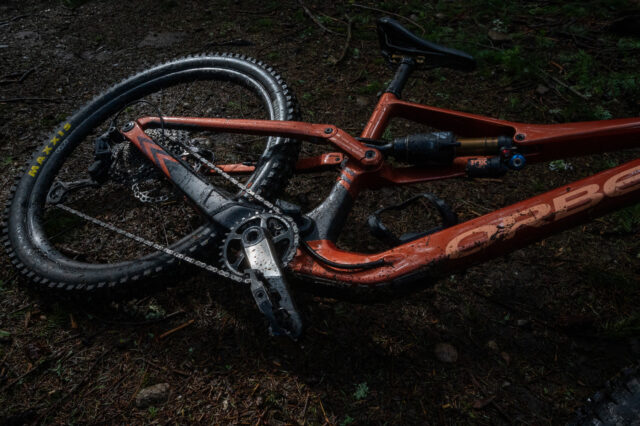
Intro
The Rallon has been in Orbea’s lineup for quite some time, serving as their longest-travel, most Enduro-oriented offering. We were big fans of the prior-generation bike but found it to be notably quick handling, lively, and less planted and stable than average for a modern Enduro bike. The last Rallon felt totally coherent in that niche — and there’s very much a place for that sort of versatile take on an Enduro bike. But now there’s a new version of the Rallon, and Orbea’s describing it as more stable, more composed at speed, and generally just “more bike.”
The tweaks that Orbea has made definitely look to push the Rallon in that direction, but they also look to be more of a modest refresh than a massive overhaul — so what exactly has Orbea changed, and what does the end result look like?
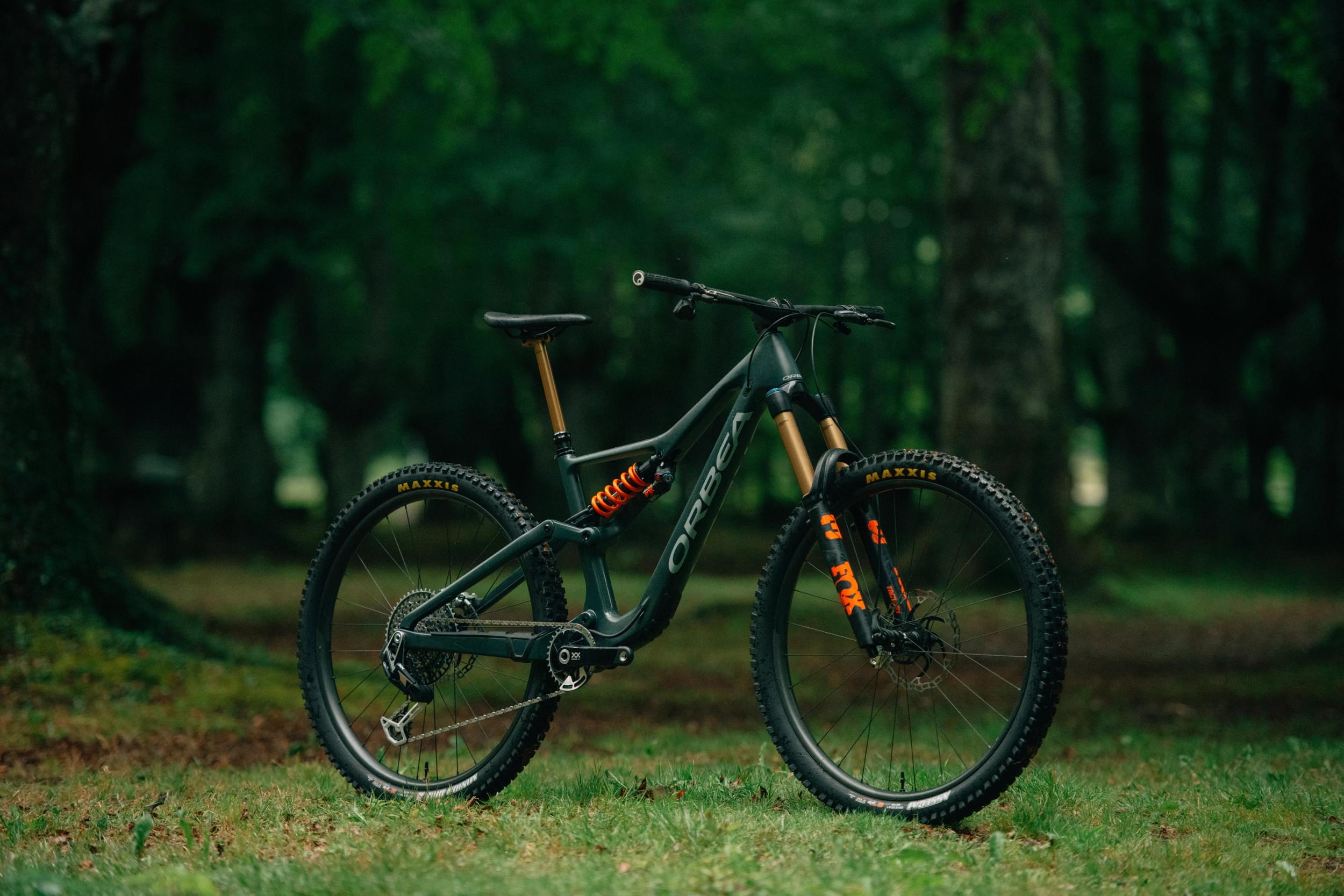
The Frame
The new Rallon frame has very similar lines to the outgoing model, and the general feature set is quite similar, too. The Rallon is offered only with a carbon fiber frame and uses Orbea’s typical suspension layout (a linkage-driven single pivot with the swingarm-seatstay pivot located concentric to the rear dropout, a-la Split Pivot and Trek’s ABP). In the new Rallon, it produces 167 mm of rear-wheel travel (up from 160 mm on the prior-generation bike) via a 230 x 62.5 mm shock. Two different shock extenders, both of which are included with the Rallon, toggle between the mixed wheel and full 29’’ configurations, with the 29er shock extender featuring a flip chip to tweak the geometry slightly; the mixed-wheel version forgoes the flip chip and produces geometry that’s nearly identical to the 29er configuration in the low setting (more on that in a minute).
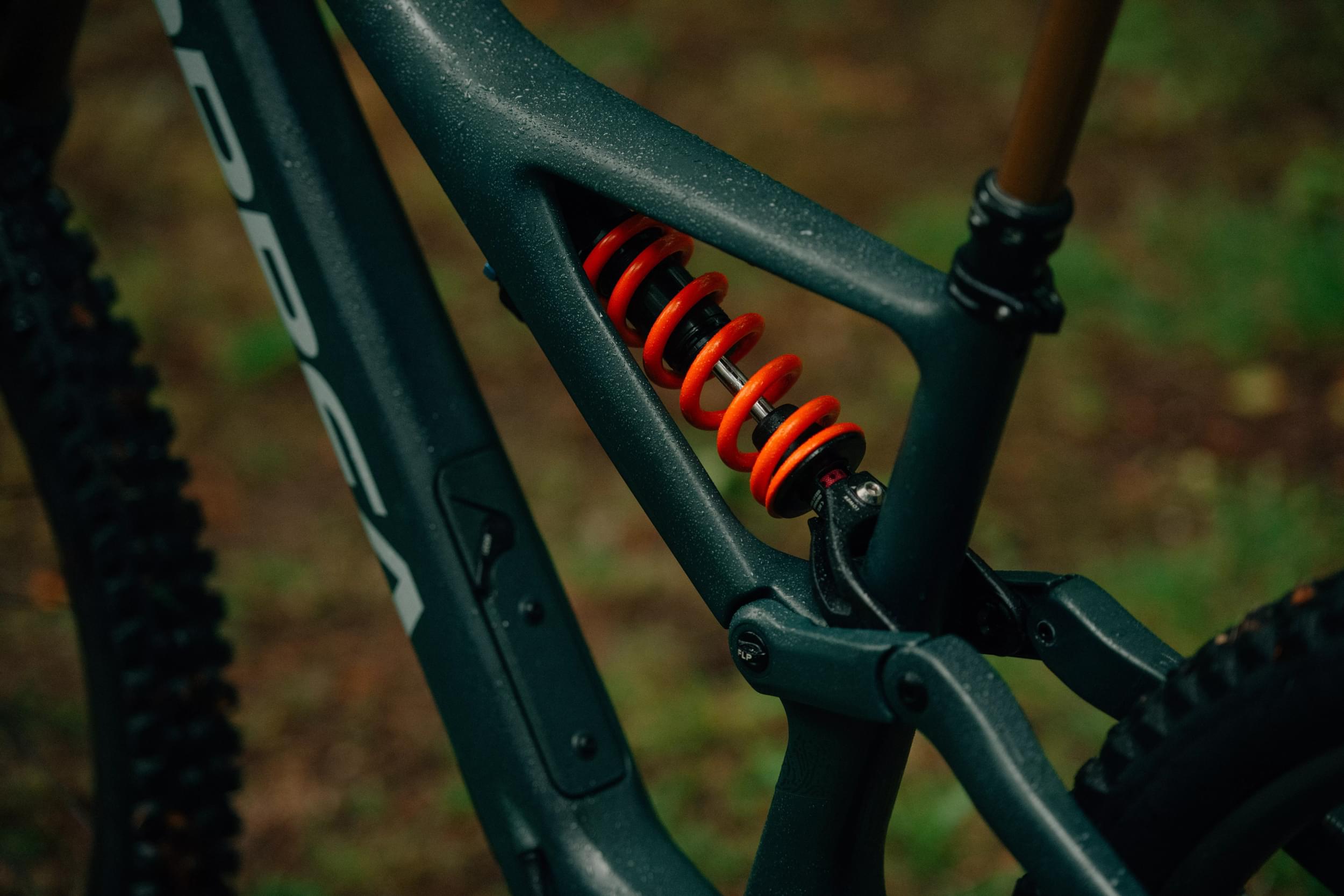
The main features of the new Rallon mostly carry over from the previous version. Cable routing is fully internal (but not through the headset, in contrast to the new Occam SL and Occam LT), with guide tubes to direct it through the full length of the frame, including at the junction between the front and rear triangles. Orbea says they’ve updated the silicone seals at the cable ports to keep water and gunk out. The Rallon’s pivot bearings also feature secondary seals built into the pivot hardware to help keep things running smoothly.
The Rallon still gets Orbea’s “LOCKR” downtube storage and magnetically-stowed multi-tool (3, 4, and 5 mm Allen keys + a T25 Torx) in the rocker link, plus a 6 mm Allen and valve core tool in the rear axle handle. The bottom bracket shell is threaded, and the rear brake mount takes a 180 mm rotor directly. The geometry-adjusting flip chip (on the 29’’ shock extender) uses a single bolt to swap settings but unfortunately doesn’t get the slick new half-turn, no-disassembly version from the new Occam LT.
Orbea also (rightly) highlights the especially good seatpost insertion on the Rallon — its seat tube is straight and uninterrupted, which leaves room to bottom out a 200 mm dropper post to the collar in even the Small frame.
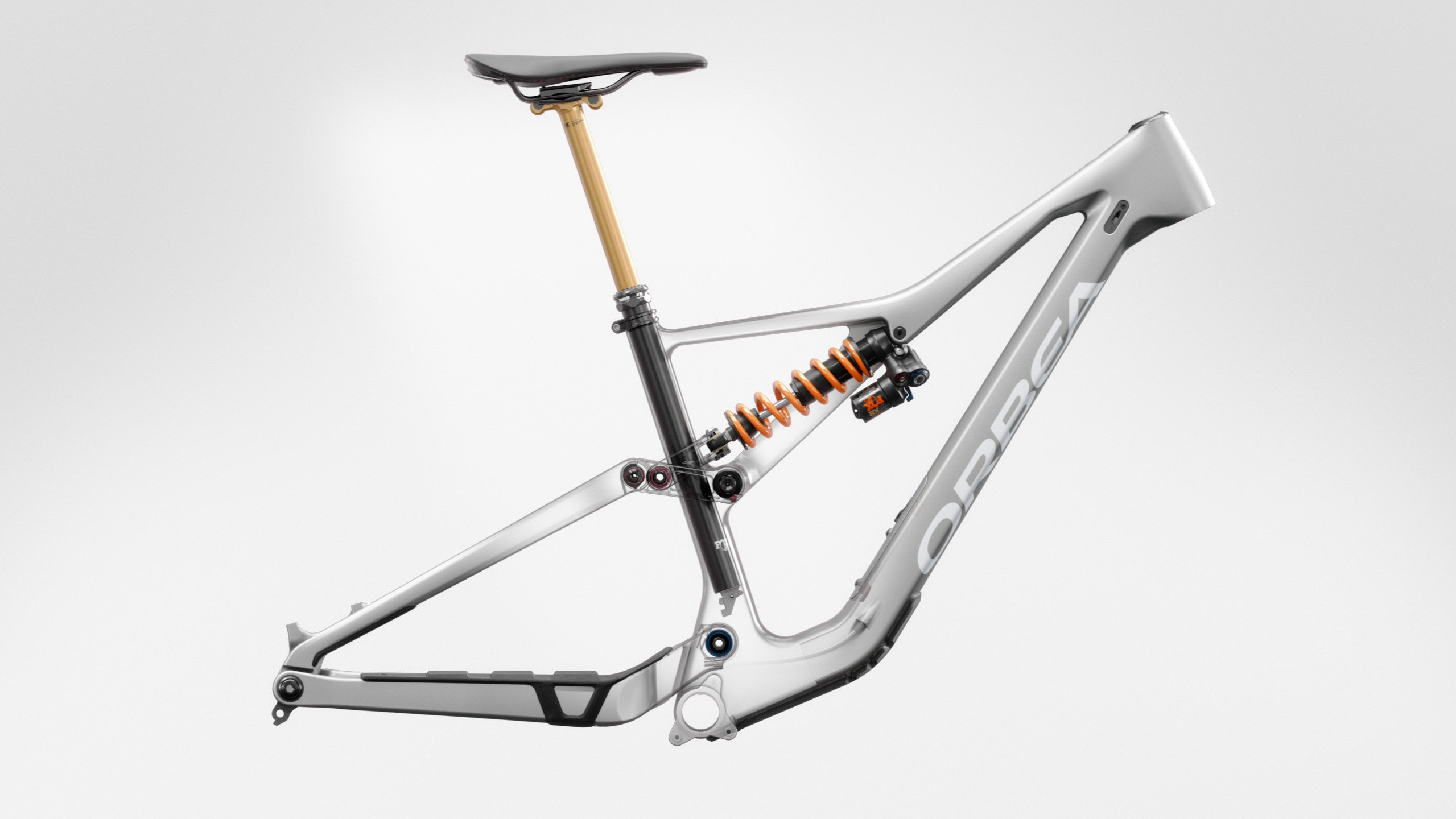
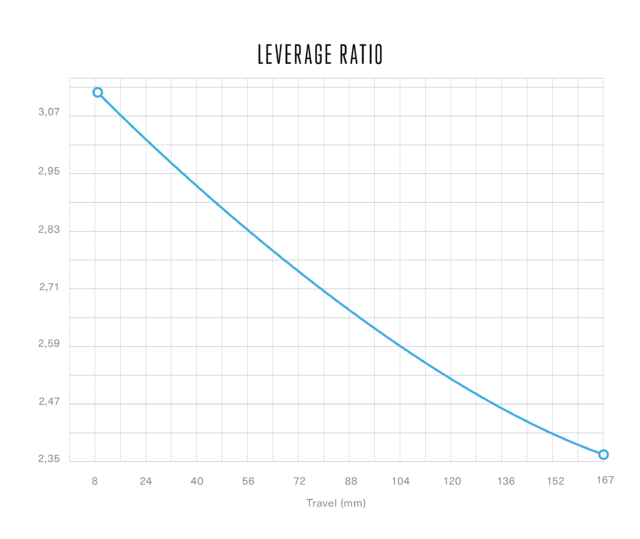
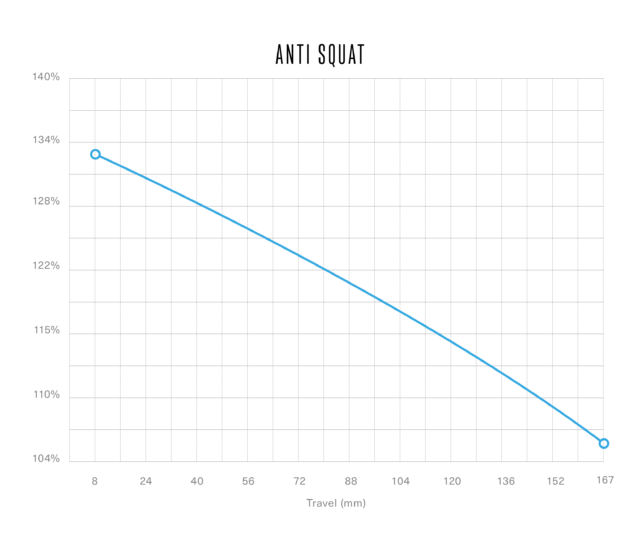
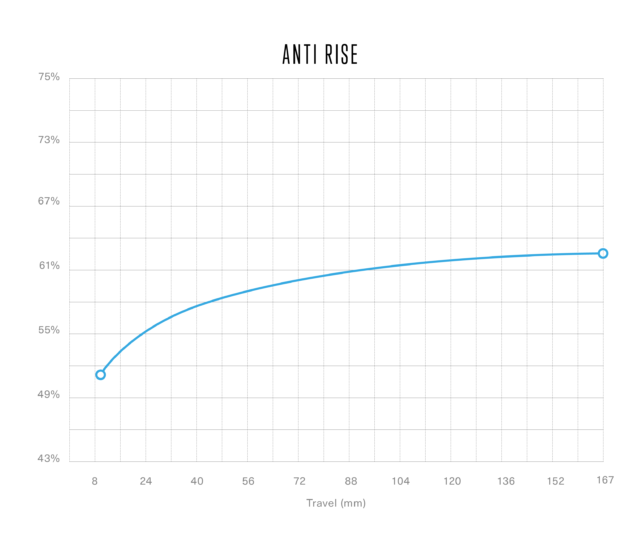
Fit & Geometry
The geometry of the new Rallon is very similar to that of the outgoing one — the headtube angle has been slackened by 0.5° and that’s about it as far as changes go. It’s offered in four sizes, Small through XL, all of which get 440 mm chainstays, a 63.5° headtube angle, 77° effective seat tube angle, and reach ranging from 430 to 505 mm in 25 mm increments. Those numbers are for the 29’’ wheel configuration in the low setting; going to the mixed-wheel configuration shortens the chainstays by a couple of millimeters but leaves everything else the same, and going to the 29’’ wheeled high position steepens both angles by 0.5° and adds about 5 mm to the reach while reducing the bottom bracket drop from 35 mm to 28 mm.
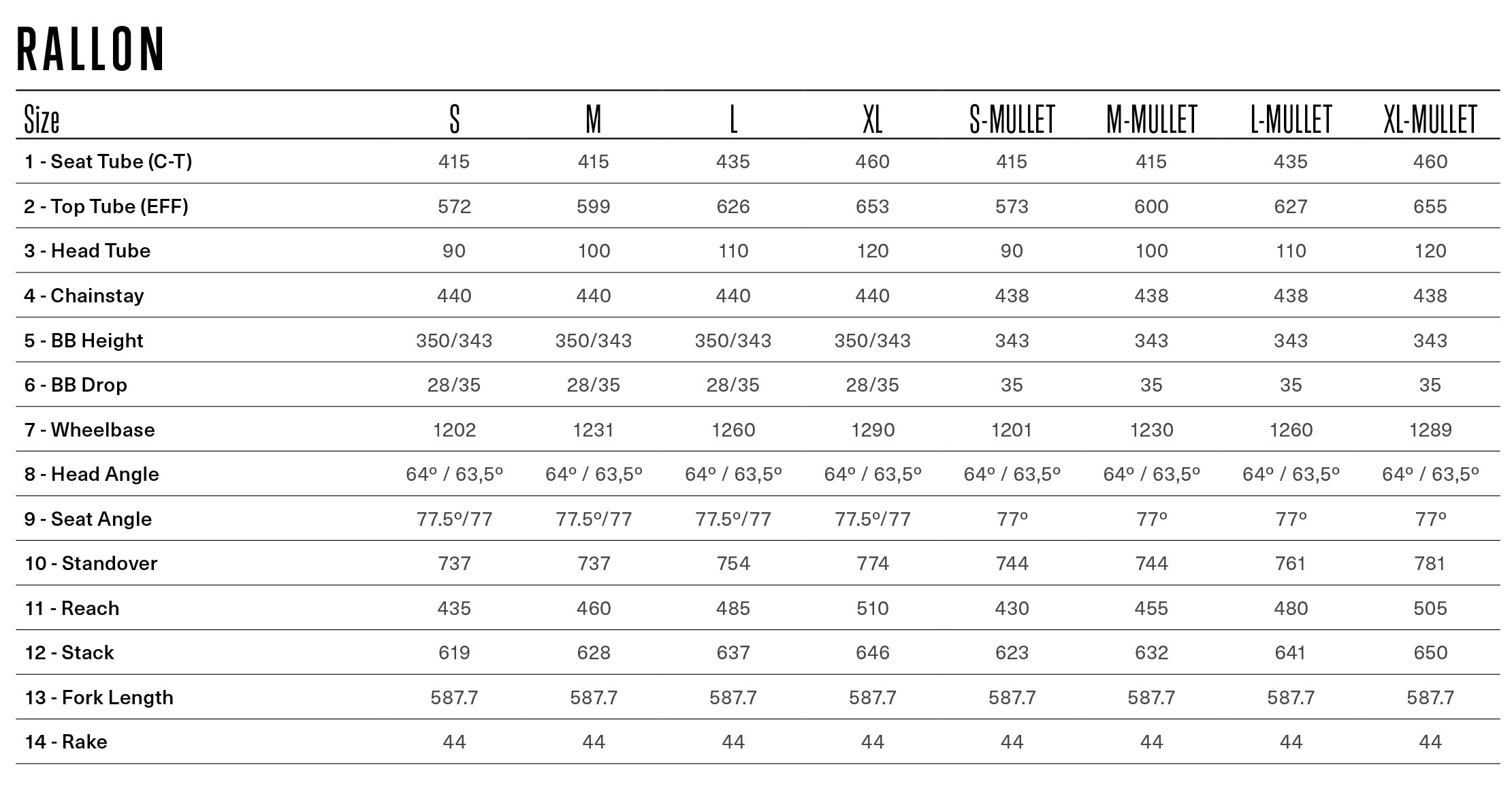
That may not be much of a change compared to the outgoing Rallon, but those are still nice, modern numbers for an Enduro race bike these days — Orbea doesn’t seem to be messing with a good thing too much, and we’re certainly not complaining. It is interesting how similar the Rallon’s numbers are to not just the prior-generation version, but also the new Occam LT that they launched last week — that bike’s numbers are nearly identical to those of the outgoing Rallon, so it makes sense that Orbea has slackened out the headtube angle on the new Rallon a little to better differentiate the two.
The Builds
Orbea offers the Rallon in five different builds, ranging from $5,299 to $10,999. As per usual for Orbea, they all feature Fox suspension but there are a couple of SRAM T-Type builds in the mix now, in contrast to the all-Shimano options on the prior-generation Rallon.
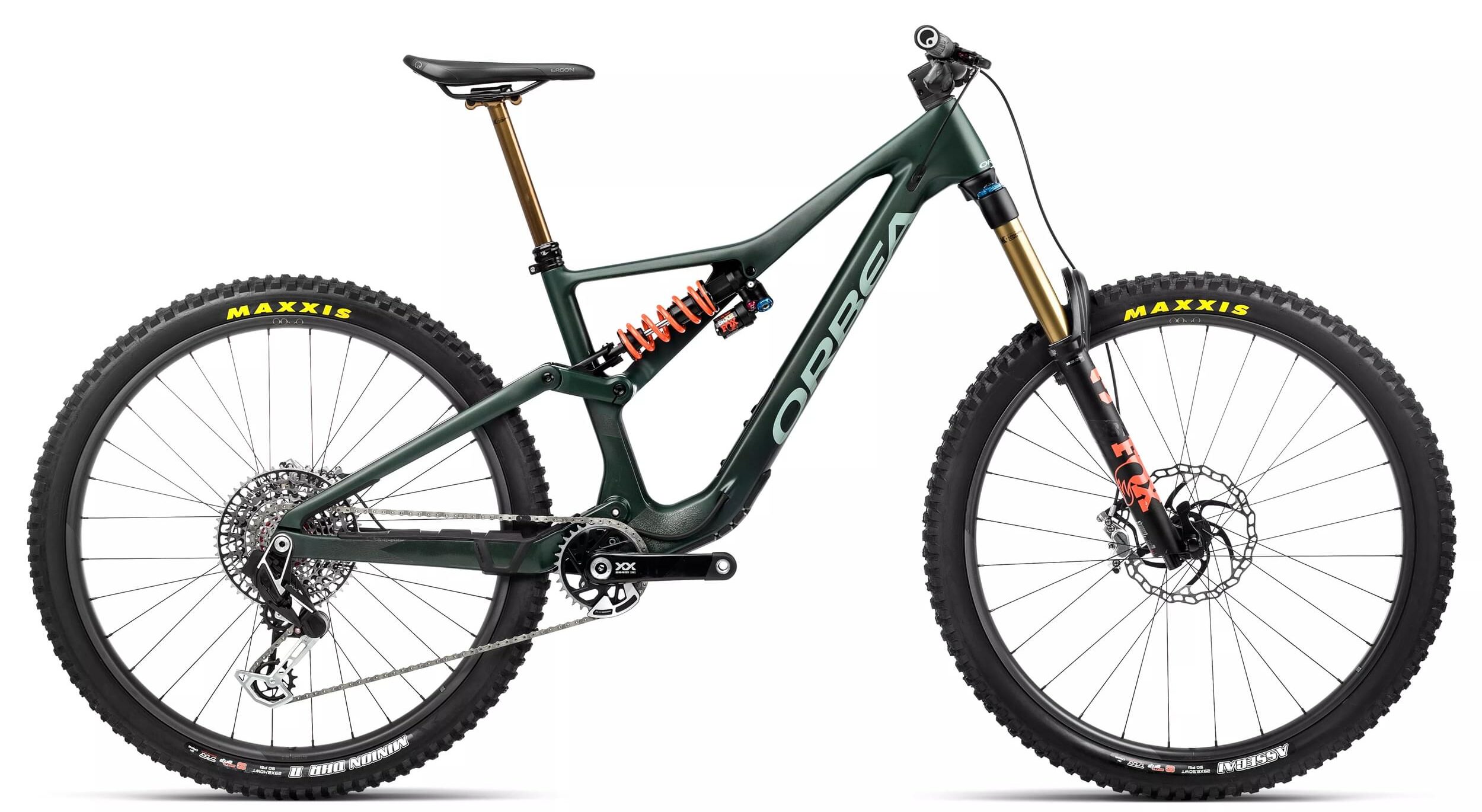
Orbea’s OC Mountain Control MC21 dropper post now comes with up to 230 mm of drop, and all the Rallon builds can be customized through Orbea’s MYO configurator to swap out different length seatposts and stems, and a variety of other upgrade options. The details vary based on the build tier you’re starting from; check out their website for the details. Custom paint is also available for an upcharge.
Here are the highlights for all the Rallon builds:
- Drivetrain: Shimano SLX w/ Deore chain and Race Face Aeffect Crank
- Brakes: Shimano Deore 4-piston
- Fork: Fox 38 Performance
- Shock: Fox Float X Performance
- Wheels: Race Face AR30
- Dropper Post: OC Mountain Control MC21
- Drivetrain: Shimano XT w/ SLX chain and Race Face Turbine Crank
- Brakes: Shimano XT 4-piston
- Fork: Fox 38 Performance
- Shock: Fox Float X Performance
- Wheels: Oquo Mountain Control MC32 Team w/ DT Swiss 350 hubs
- Dropper Post: OC Mountain Control MC21
- Drivetrain: SRAM GX Transmission
- Brakes: SRAM Code Bronze
- Fork: Fox 38 Performance
- Shock: Fox Float X Performance
- Wheels: Oquo Mountain Control MC32 Team w/ DT Swiss 350 hubs
- Dropper Post: OC Mountain Control MC21
- Drivetrain: Shimano XT w/ SLX chain and Race Face Era crank
- Brakes: Shimano XT 4-piston
- Fork: Fox 38 Factory
- Shock: Fox Float X Factory
- Wheels: Oquo Mountain Control MC32 Team w/ DT Swiss 350 hubs
- Dropper Post: Fox Transfer Factory
- Drivetrain: SRAM XX T-Type
- Brakes: SRAM Code Ultimate
- Fork: Fox 38 Factory
- Shock: Fox Float X Factory
- Wheels: Oquo Mountain Control MC32 LTD carbon rims w/ DT Swiss 350 hubs
- Dropper Post: Fox Transfer Factory
Some Questions / Things We’re Curious About
(1) The prior-generation Rallon was an especially sharp-handling, lively take on a 160mm-travel Enduro bike. The tweaks Orbea has made to the new one look to make it more stable and composed at speed, but is that borne out on trail, and how different is the new bike from the version it replaces?
(2) As many Enduro bikes have gotten longer, slacker, and more stable in recent years, where does the new Rallon wind up on that spectrum, relative to its other competitors?
(3) And does the new Rallon stand out for its pedaling performance as thoroughly as the prior-generation bike did?
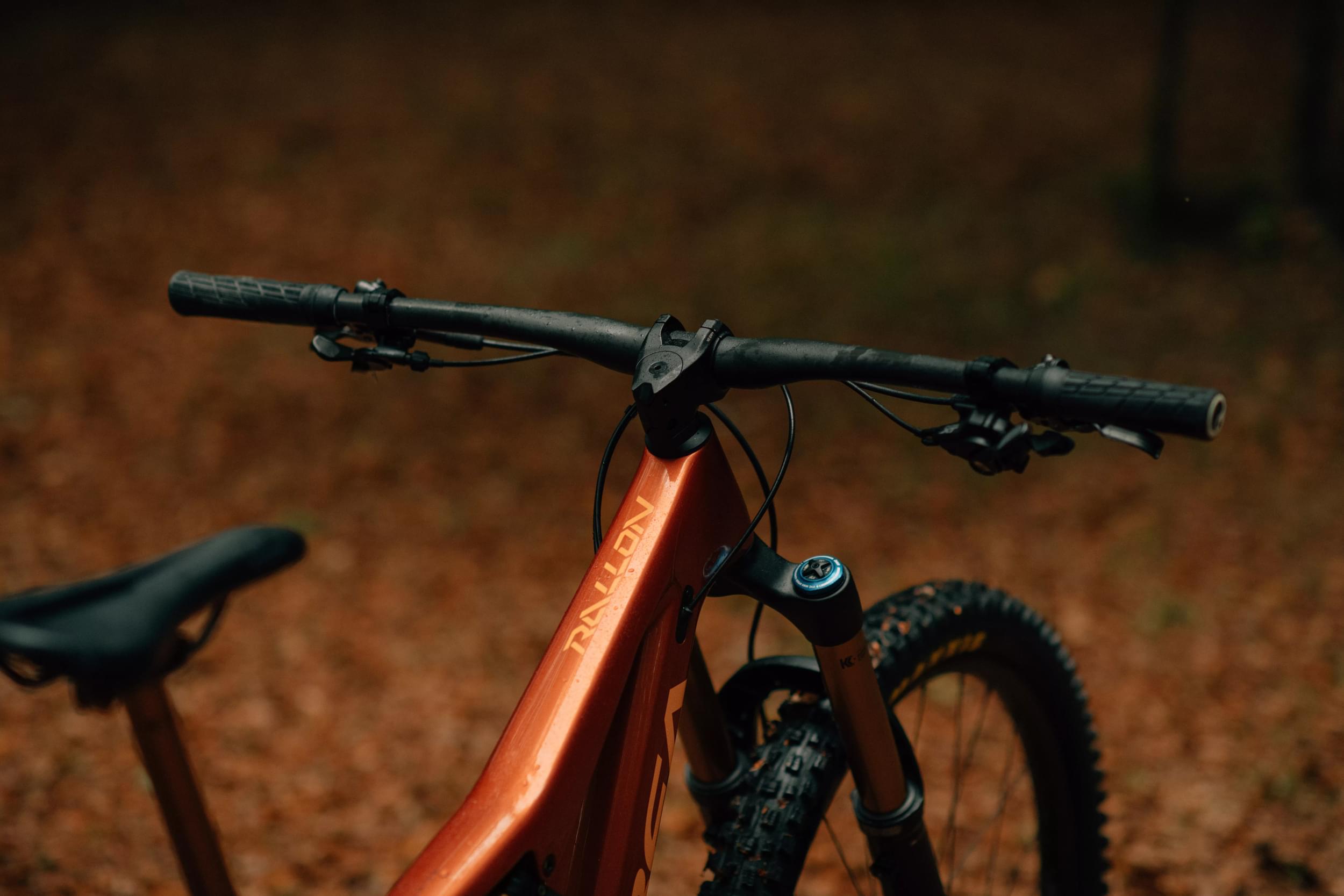
FULL REVIEW
Orbea’s Rallon has been a fixture in their lineup for quite a while now, and the outgoing 2023 version had us smitten with its sharp handling and impressive efficiency — two traits that aren’t often standout aspects of brands’ longest-travel offerings.
But Orbea saw an opportunity to build on the Rallon’s pedigree as a race-ready Enduro machine, with the updated model getting more travel and a slacker head angle.
The changes are slight on paper, but the results add up to notable differences on the trail. For race-oriented riders, that’s a very good thing, but it does carry some tradeoffs.
Fit & Sizing
Zack Henderson (6’, 160 lbs / 183 cm, 72.6 kg): As mentioned in our initial rundown of the changes to the 2024 Rallon, the geometry of the 2024 model is quite similar to the version it has replaced, aside from the headtube going 0.5° slacker and gaining an extra 7 mm of rear-wheel travel.
I am generally a shoo-in with most size-Large bikes these days, and this updated Rallon felt just as much like home as the prior version. It’s a very neutral-feeling bike from the get-go, with the same nicely short 435 mm seat tube in the size Large that allows me to run just about any length dropper I could want, thanks to the very long insertion depth. Its reach sits right at my preferred 480 mm length in the “Lower” setting (with either dual-29” wheels or in the mixed-wheel setup), and the 626 mm top tube feels roomy without being stretched.
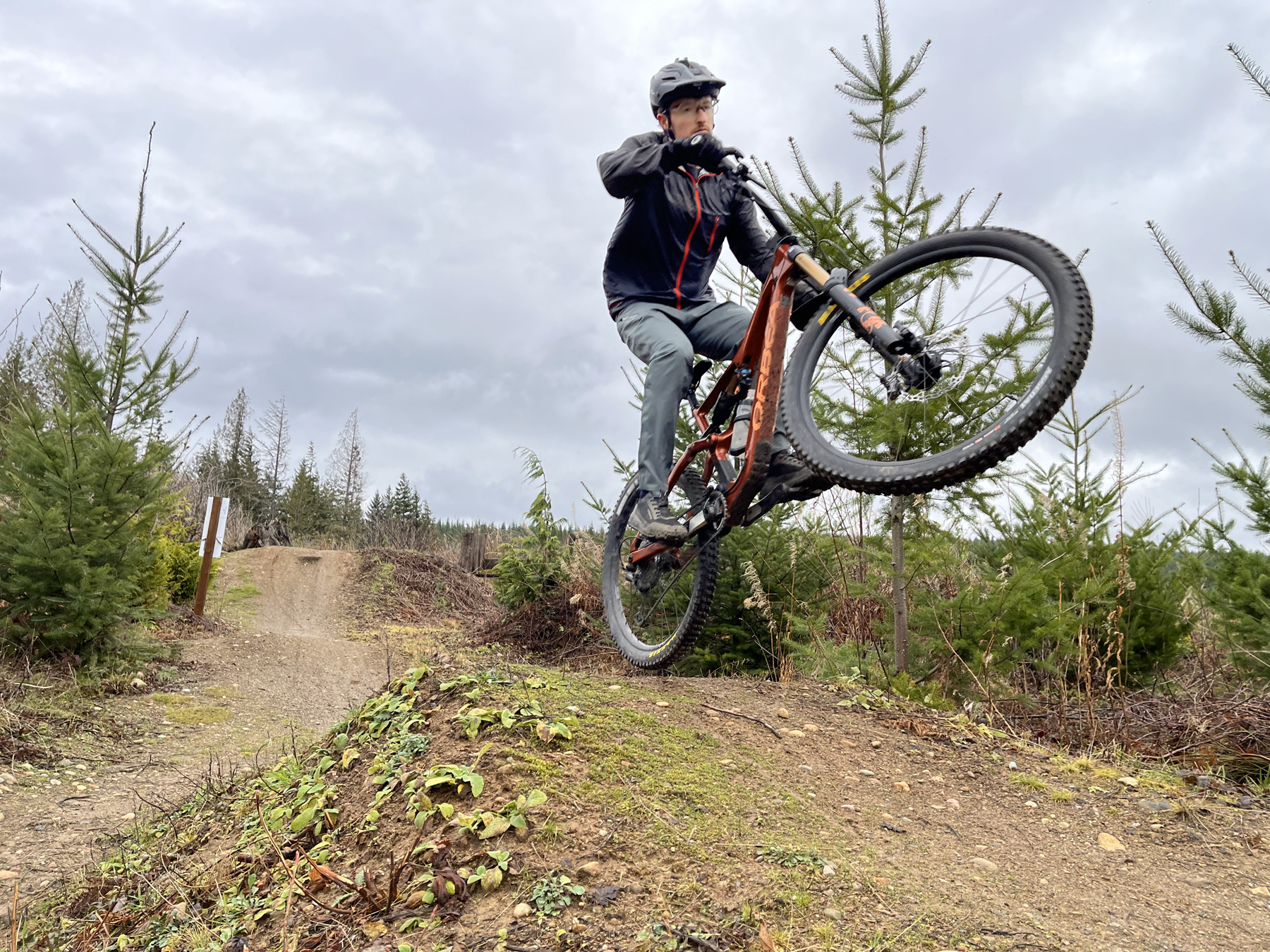
The stack height sits between 637 and 641 mm, depending on the configuration, which felt perhaps a tiny bit low on the steepest trails but quite comfortable in most scenarios. I did prefer a higher-rise bar than the 20 mm option that showed up with the bike, and shifting to a 30 mm rise helped bring the taller front end I was looking for. Riders with the same preference can opt for the 35mm-rise bar when configuring the bike on Orbea’s website.
The Rallon’s bottom bracket sits quite low, with a 35 mm drop in the “Lower” and mixed-wheel configurations, a feature which I think lends fantastic handling traits but does merit consideration of 165 mm cranks. If that sounds too low, the 7mm-higher bottom bracket in the “Low” setting significantly improves ground clearance.
Orbea hasn’t yet subscribed to the size-specific rear center movement, so the Rallon’s chainstays are fixed at 440 mm across the board in its dual-29” configuration, or 438 with the mixed-wheel link installed. As someone who has been awoken to some of the balance and stability that longer stays can offer, especially on a go-fast bike like the Rallon, I personally would have loved to see 445 mm or longer on the size Large (maybe, at least, as an option). That said, 440 mm still sits in a fairly normal range, though riders on the Small and XL should take care to consider the balance of front and rear centers at those ends of the Rallon’s size range.
Orbea breaks the typical industry model a bit by offering a made-to-order delivery model. Aside from typical dealer stock, any bike ordered on Orbea’s website can be customized fairly extensively, from custom paint jobs through their MyO program to smaller adjustments around handlebar rise, tire selection, and mixed-wheel versus full-29” setup. Bikes are then delivered to your local Orbea dealer. While our test bike showed up in a stock configuration, it’s very cool to see Orbea offering so much customization potential to get your fit just right while still supporting their dealer network.
David Golay (6’, 170 lbs / 183 cm, 77.1 kg): Like Zack, I’ve found the fit of the Large Rallon to be pretty on the money. Orbea’s recommended sizing bands put both of us near the middle of the range for the Large frame and near the bottom of the band for the XL, but I’m not at all tempted to size up. I had an easy time getting comfortable on the Large frame (and didn’t feel the need to swap in a higher-rise bar like Zack did); the Large Rallon was intuitive and comfortable from the start.
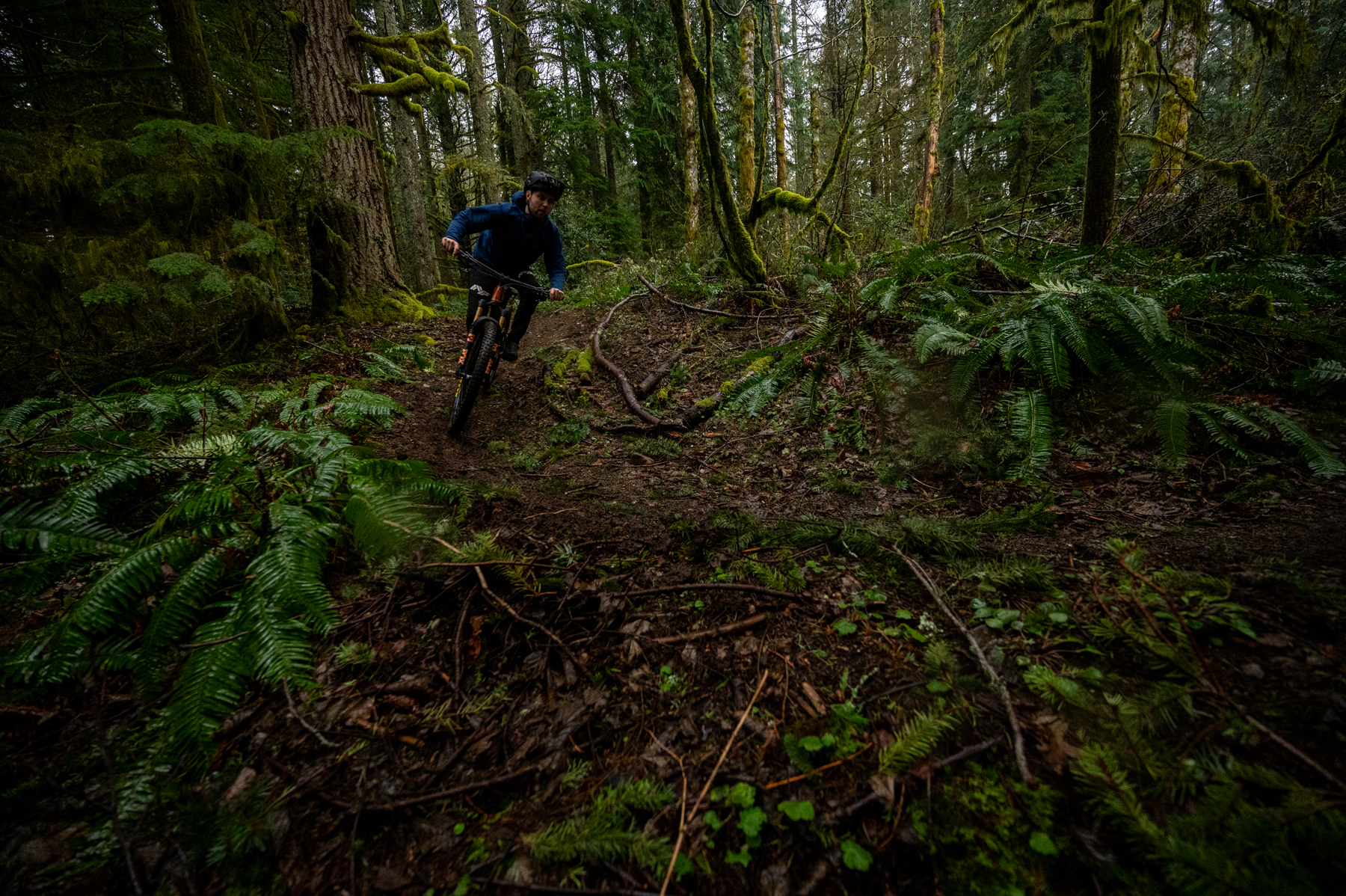
Climbing
Zack: The updated Rallon had some big shoes to fill on the climbing side of things, with the prior model being one of the more eager and comfortable climbers I’ve ridden in the Enduro category. Fortunately, Orbea didn’t mess too much with a good thing — the new Rallon’s combination of high anti-squat, a fairly low weight, and well-balanced geometry leads to an efficient ride on steep climbs and more rolling terrain.
The Rallon’s high anti-squat values do carry some compromise on more technical and punchy climbs, where its suspension tends to stiffen significantly under power. This can cause the rear wheel to break traction a bit more quickly than some other bikes with anti-squat values closer to 100%. Still, it’s a tradeoff I will happily accept on a 167mm-travel bike, in exchange for the overall efficiency gains and general responsiveness under power. Like its predecessor, the updated Rallon responds very well to more spirited pedaling efforts, making it more satisfying to ride on mellower or meandering terrain than its geometry and travel numbers might suggest.
Here, it’s worth spending a bit of time talking about the differences between the Rallon’s full-29” and mixed-wheel configurations, since they significantly impact handling while climbing.
The “Lower” setting in 29” mode is likely where I logged the most miles on the bike, largely for that configuration’s descending merits, and on the way up, it’s also quite good. The low bottom bracket does result in some pedal strikes on occasion, though my affinity for large flat pedals doesn’t help the cause. The bike’s 63.5° head angle can feel a little vague (even a bit floppy) on steeper pitches, but the overall handling is helped significantly by the heavy dose of anti-squat keeping the bike from sinking into its travel on the way up the hill.
The Rallon’s steeper “Low” setting made a bigger difference than I expected in terms of combating the vague steering sensation while also bringing the bottom bracket up a bit, making it the best of the configurations I tried while pedaling uphill — but with compromises on the way down (more on that below). The Rallon’s mixed-wheel mode had the same general handling characteristics of the “Lower” setting in 29” guise, but I did notice the smaller 27.5” wheel felt a bit less efficient, particularly during bigger efforts when trying to maintain climbing speed on rougher ground.
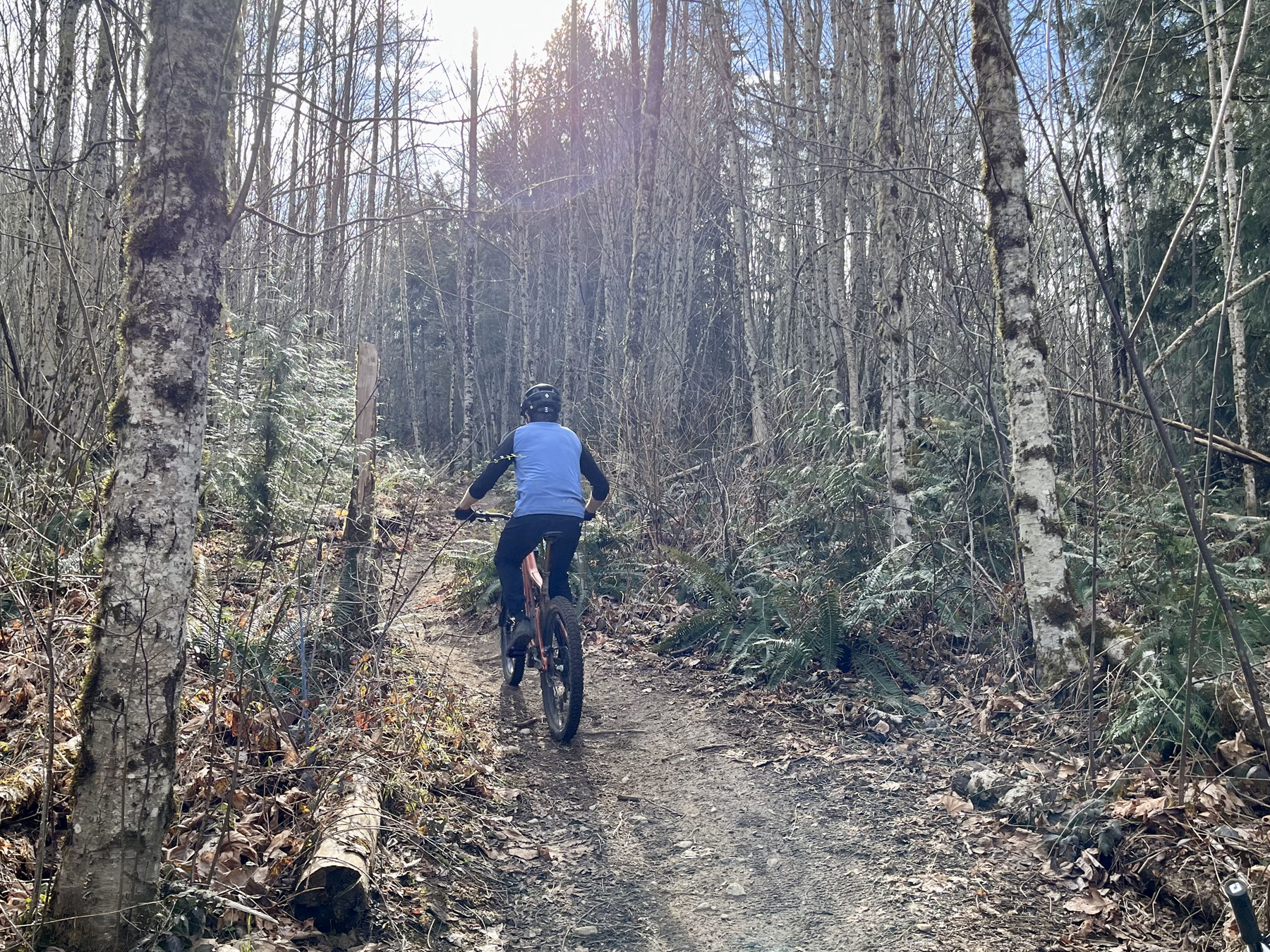
For all of its similarities with the prior iteration, this newer, slightly burlier Rallon does feel just a tad less sharp and eager on the way up the hill — and that’s entirely unsurprising, given the changes in geometry and suspension travel. The new bike’s slightly slacker head angle mutes steering inputs a touch while also making the wheelbase a bit longer, and its slightly deeper rear suspension doesn’t feel quite as taught. The latest Rallon remains quite an efficient example of a modern Enduro bike, and as we’ll get into shortly, these changes may very well make for a faster bike overall.
David: Yup. The prior-generation Rallon was one of the most efficient, snappy-feeling Enduro bikes I’ve ridden to date. The new one is still quite good on that front but has lost a little bit of the sharpness of the outgoing one. In trade, though, its traction under power has improved a touch, and I want to be careful not to overstate the degree of the changes, either — the two feel pretty similar overall.
Descending
Zack: The outgoing Rallon was one of my most frequently recommended bikes over the past couple of years, particularly to folks who wanted one bike that could take on pretty much anything — from longer all-day rides to bike-park laps. It was just a very well-rounded bike, with superb energy that rewarded hard riding both up and down the hill.
The downside to that previous bike’s sharp and efficient handling was that it wasn’t necessarily the most forgiving. Pinning it down long, rough descents saw the fatigue set in more quickly than on some of the burlier bikes in the Enduro segment.
Orbea agreed, and consequently prioritized composure and stability in the Rallon’s recent update. I’d say they have met their goal. The new bike’s 0.5°-slacker headtube angle puts the front wheel just slightly farther out front and buys both more stability and an ability to maintain a neutral body position on steep trails without feeling like you are about to be sent out the front door. The current bike’s low bottom bracket, in particular, plays quite well with its more aggressive headtube angle to bolster that sense of stability, and the higher-rise handlebars that I fitted made for a tall, confident body position that enhanced the feeling of control over that slack 63.5° front end.
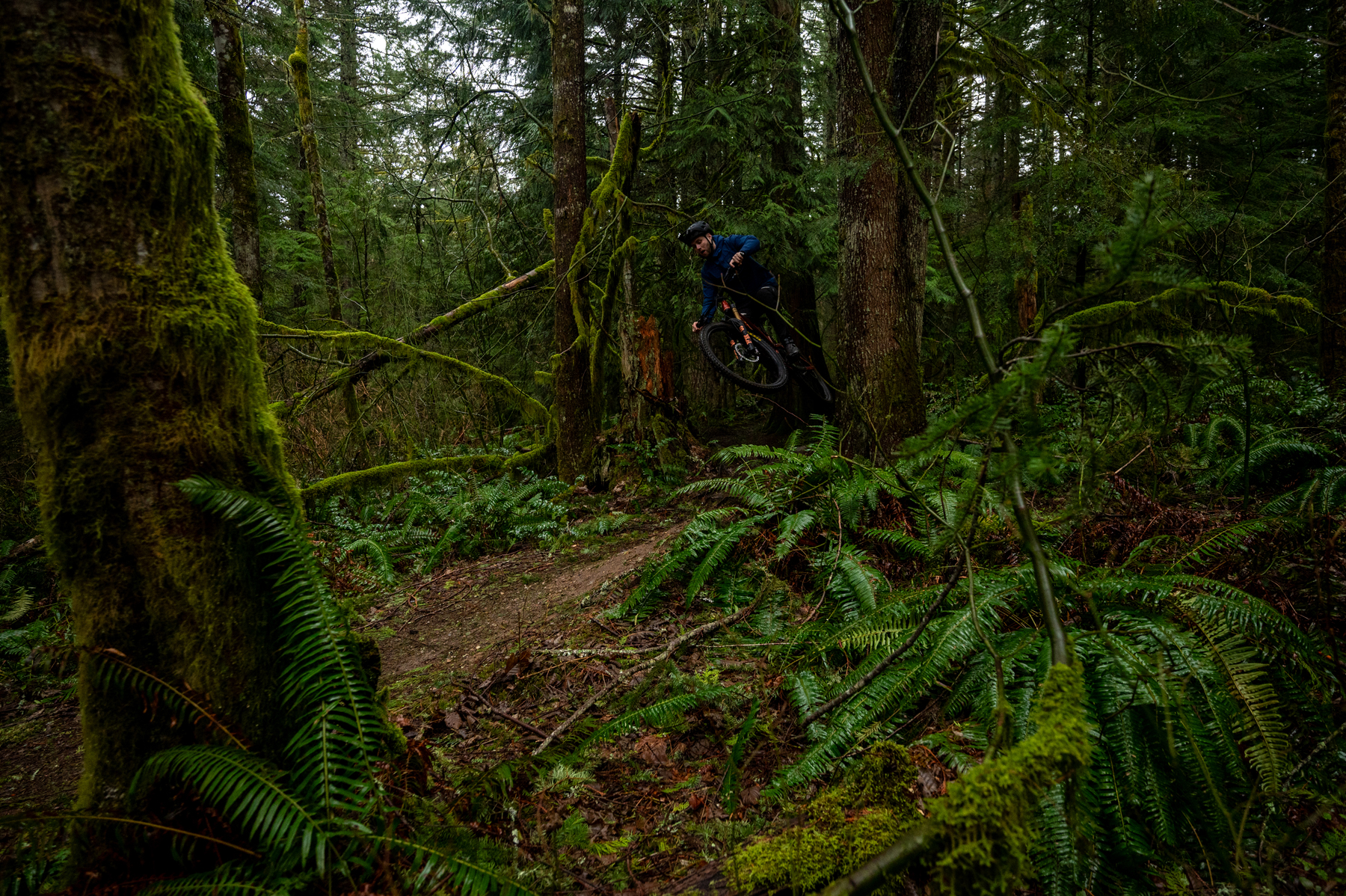
The new Rallon’s 167 mm of rear travel definitely feels slightly deeper than the outgoing model’s 160 mm — perhaps more so than I expected for such a small on-paper change. Paired with the Fox Float X2 rear shock, which retains a slightly more muted feeling than other air shocks on the market, the Rallon has a tendency to hunker down in its midstroke, doing an admirable job of preserving geometry and grip while retaining just enough travel to mask any poor line choices on my part.
The cumulative result of these two changes is a bike that more effectively turns down the volume in rough terrain than its predecessor, making it easier to stay off the brakes just a bit longer as speeds pick up. The Rallon frame is still on the stiffer end of the spectrum, which helps it feel quite direct and responsive to rider input, while the added travel and length take some sting out of bigger hits.
The Rallon’s low bottom bracket height, especially in the “Lower” and mixed-wheel configurations, lends stability over repeated bigger hits while also retaining some of the fiendish cornering qualities of the prior version. Again, it’s not quite as sharp as the outgoing Rallon in that regard, requiring just a bit more body English to tip into sharper corners, thanks to its slacker head angle, but it remains one of the better options I’ve ridden from a cornering perspective.
While I did spend a good bit of time riding the Rallon in both of its 29’’ configurations, I ended up with a strong preference for the “Lower” option from an overall handling standpoint. As mentioned earlier in the Climbing section, the higher bottom bracket and steeper head angle of the “Low” setting made for a more spirited-feeling ride on flatter terrain, but also gave me the sensation of being less integrated between the wheels as the trail got steeper and rougher. The “Lower” setting offered quite a bit more stability, making it an interesting case of relatively small adjustments yielding substantial differences on the trail.
The updated Rallon continues the outgoing version’s impressive performance as a great performer in the mixed-wheel configuration. I found that, while the 29” setup in the “Lower” geo setting carried speed a bit better over larger holes and compressions, the 27.5” rear wheel in mullet mode was more out of the way on steeper trails, helping me to stay just a bit more neutral and taller on the bike while being a bit easier to stuff into natural rutted corners. It was also particularly fun and playful on jump lines and more bike-park-esque flow trails, due to the smaller wheel being a bit easier to toss around at speed.
I did notice the typical tradeoff to a mixed-wheel setup in longer sweeping corners or slight off-camber sections, where the rear wheel can seem to want to carve a slightly different angle than the front, giving the rear wheel a tendency to want to “step out” a bit on corners with longer arcs. In all situations, the 29” tire did seem to hold on just a bit longer than the smaller 27.5” wheel in the mullet setup, especially in looser conditions. The mullet configuration was a case of less business and more party, but regardless of personal preference, both full-29” and mixed-wheel fans can find a lot to like in the Rallon.

Overall, the updates to the Rallon are a case of marginal changes making small and intuitive refinements to the ride and, in turn, inching it closer toward its goal of being the fastest race-ready Enduro bike. Where the prior version felt notably responsive at the expense of some comfort and poise, the updated Rallon brings a bit more composure in rough and fast terrain. It gives up some of that addictively sharp handling that the outgoing version offered, but it is ultimately less fatiguing to ride fast — and as an Enduro race bike, I think it is better for it.
David: I’m pretty much in agreement with Zack here, too. The new Rallon feels a little more stable and a little less sharp handling than the old one, but the changes to its suspension performance feel more notable to me. The new bike is notably more planted and composed when carrying speed through rougher stuff, at the expense of a bit of liveliness and pop in some other situations.
There’s still a solid resemblance between the two, and the old Rallon remains one of the closest comparisons to the new one that I can think of. But the updated bike is a step toward being “more” bike in most senses of the word than the old one. Not by a massive amount, but noticeably so.
As with the old bike, the new Rallon does a pretty good job of toggling between its mullet and 29er configurations without feeling like it was primarily designed for one configuration or the other. Like Zack, I appreciated the notably low bottom bracket in the “Lower” 29er setting and the lone mullet one for its cornering feel. Especially in the 29er setting, the Rallon remains one of the best bikes that I’ve been on in recent memory when it comes to loading up the bike through the pedals and railing the hell out of a well-supported corner. The range of speeds at which the new bike really excels is just a touch higher than the old one, but a lot of the same magic is still there.

Like the old bike, the new Rallon feels pretty neutral in terms of its preferred body positioning, and it’s got a relatively large sweet spot for moving around on the bike — especially given that it’s more “normal modern Enduro bike” than it is “ultra-stable bulldozer” as these things go. I’ve found it very intuitive to just get on and go, with generally straightforward suspension and cockpit setup.
The Build
Zack: Orbea’s strong partnerships with Fox and Shimano carry through its full range of builds, and our M-Team Rallon test bike left little to be desired from the majority of its components. Its Fox 38 Factory fork and Float X2 Factory sock suspension are popular and highly tunable choices, and the updated X2 felt well-matched to the Rallon’s suspension kinematics while fortunately not exhibiting any of the reliability woes that plagued the last iteration of the X2.
Shimano’s XT drivetrain is a personal favorite, and though I’ve experienced issues with derailleur-clutch longevity across Shimano’s latest range, the performance of a fresh Hyperglide+ drivetrain is tough to beat. My feelings about Shimano’s brakes are more mixed; unfortunately, the XT BR-M8120 brakes on the Rallon showed a combination of problematic traits sometimes seen with Shimano, including the dreaded wandering bite point and a couple of instances of the pads feeling and sounding inexplicably contaminated. Fortunately, Dawn dish soap came to the rescue in the case of the pads, but it’s disappointing that Shimano still has not addressed well-documented issues that have been around for years now.

While Orbea’s in-house OC components are a fairly common sight across their range, they were relatively few and far between on the high-end spec of the M-Team build. The bars and stem were swapped due to personal preference, for more rise and a correspondingly smaller number of spacers on the steerer, but the bars in particular seemed like a nicely finished piece with a more oval cross-section, similar to the One Up handlebars. They also felt fairly forgiving, and if I were buying my own Rallon, I would happily choose the 35mm-rise version while configuring the build on Orbea’s website.
The stem and headset arrangement, however, presented an irritating predicament when it came to running my own bars and stem. Orbea opted to use custom headset spacers, which are keyed to fit the headset cover and stem, and while it looks nicely aligned when bolted up, it means that you must run Orbea’s stem and headset spacers. To get around this, I found a plastic headset spacer in my toolbox and cut a small notch in it to fit around the keyed fin on the headset cover — a workable solution, but a solution to a problem that doesn’t really need to exist in the first place.
Another house-brand component was a much more pleasant surprise. Oquo is a relatively new in-house wheel brand for Orbea, intended as a high-end offering with Orbea-designed rims and good-quality builds. Aside from the name being a mouthful, I was very impressed with the finish quality and strength of the alloy Oquo Mountain Control MC32TEAM wheelset. Sapim spokes, DT Swiss 350 hubs, and asymmetric rims with front- and rear-specific profiles were all nice surprises. Despite a few good knocks, the wheels remain true and round, and I’ve appreciated the ride quality — slightly less precise than a lot of carbon rims, but a bit more forgiving.
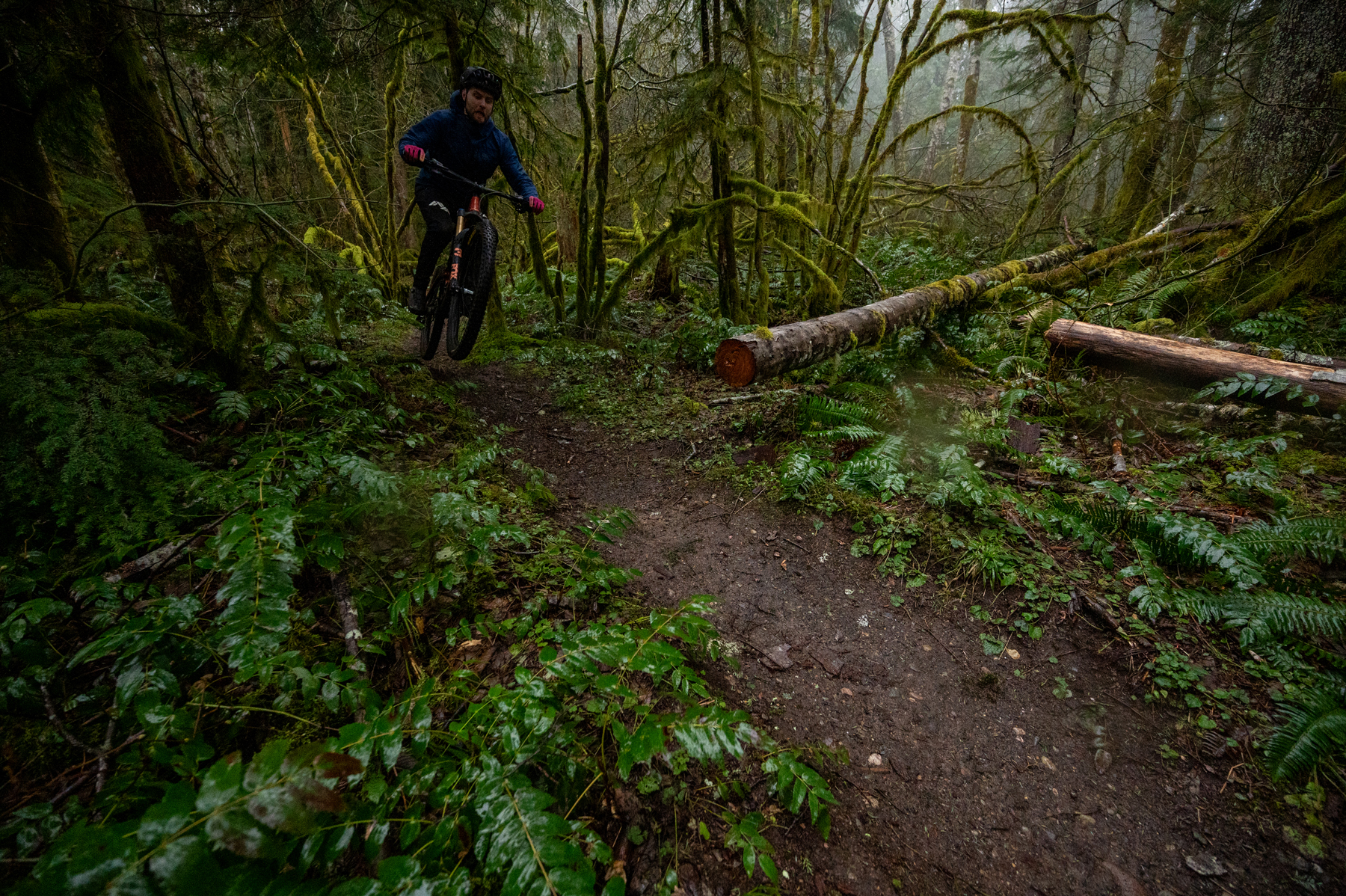
Aside from wishing for a 200 mm dropper rather than the stock 175 mm version, my only other gripe is with the tires. Maxxis EXO+ tires with that brand’s MaxxTerra compound do not suit the intentions of an Enduro race bike. As a lighter rider, I don’t struggle with flatting tires all that often and can sometimes get away with lighter casings (at least on the front wheel), but the harder MaxxTerra compound made for some scary moments before I swapped in some stickier rubber. In the case of both the dropper and the tires, other configurations can be selected when configuring the Rallon on Orbea’s website, and I’d absolutely throw down the extra $45 USD for DH-casing, MaxxGrip-compound tires.
David: I was fine with the 20mm-rise bar that came stock on the Large Rallon, but otherwise, I’m in full agreement with Zack on everything else here. Nothing more to add, really.
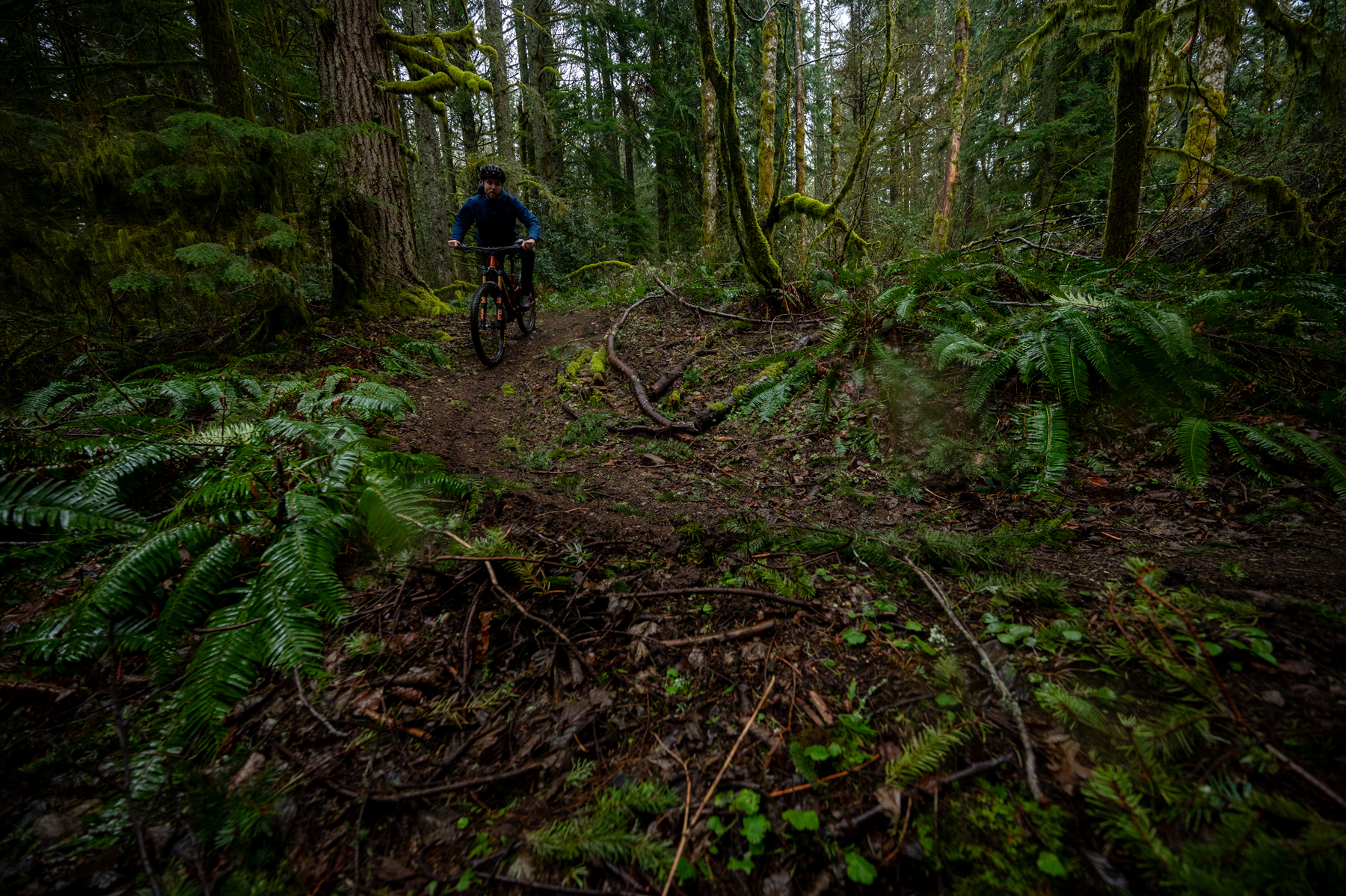
Who’s It For?
The 2022-2023 Rallon was an easy bike to recommend for its balance of capability, sharp handling, and overall versatility. Through its small changes in head angle and rear-wheel travel, the 2024 Rallon foregoes some of that all-rounder balance in favor of increased stability, confidence, and speed. It remains a very easy bike to recommend for its excellent overall performance, responsive handling, and strong pedaling efficiency, but its appeal sits more firmly in the Enduro camp, needing just a bit more speed and pitch to feel at home when compared to most shorter-travel bikes that fall into the “Trail” category.
The Rallon’s geometry adjustments in its 29” configuration do open up some additional versatility, relative to some other Enduro bikes, with the Rallon’s steeper and taller “Low” setting adding appeal for folks who live in flatter locales where the trails are still rough enough to merit nearly 170 mm of travel, but where pedaling efficiency and ground clearance are also a priority. The Rallon’s ground-hugging “Lower” configuration (and mixed-wheel setup) feel best when trails get properly steep and fast.
Bottom Line
Orbea set out to make the Rallon a faster Enduro race bike, and in that regard, the updated bike has delivered. Despite losing a bit of the sharpness of its predecessor on less-than-rowdy trails, the updated Rallon brings notable improvements in calmness and capability in steeper and faster terrain. Orbea’s measured approach shows how relatively small refinements can yield sizeable differences on the trail, and that philosophy has yielded a particularly balanced, race-ready Enduro bike that I expect could work exceedingly well for a lot of riders, full 29” and mixed-wheel alike.
Deep Dive Comparisons
BLISTER+ members and those who purchase our Digital Access Pass can check out our Deep Dive comparisons linked below. Get our Digital Access Pass to view all our Deep Dives and Flash Reviews, or become a BLISTER+ member today to get access to that and a LOT more, including the best worldwide Outdoor Injury Insurance, exclusive deals and discounts on skis, personalized gear recommendations from us, and much more.
Check out our Deep Dive comparisons of the Orbea Rallon to see how it compares to prior-generation Rallon, Ibis HD6, Yeti SB160, Pivot Firebird, Norco Sight, Propain Tyee, Contra MC, Norco Range, Trek Slash, Santa Cruz Megatower, Santa Cruz Nomad, YT Capra, Nicolai Nucleon 16, Cannondale Jekyll, Chromag Lowdown, REEB Steezl, Cotic RocketMAX, Yeti SB160, Specialized Enduro, and Banshee Titan.

Love mine (‘23 model) but would be curious to understand if they’ve addressed any of:
* General rattle and noise
* Wobbly LOCKR lid when loaded up with a water bottle – poss a source of noise, but also reported by some, to cause wear over time
* 28t chainring support
As far as I can see the only changes are the longer shock stroke, 60 to 62.5mm. The 2022/23 models were already 167mm compatible according to the blue paper.
I’m not sure how they’ve made the head angle slacker though, perhaps the shock yoke is slightly different or there’s some creative measuring going on?
I had the same thought, but Orbea says it really is a new frame — I specifically asked. They evidently didn’t feel the need to change all that much, but we really liked the prior-gen one and are certainly proponents of not fixing what isn’t broken.
Interesting that they confirmed it’s a new frame. I’ve just bought a 2023 m20 and keen to put a coil on it… Possibly with the longer stroke shock, I know it’s been done.
That’s not an all new frame. It’s a longer shock and a spacer.
What do you mean by spacer? Somewhere below the lower headset bearing ?
I had this bike and Orbea suspension is very bad. My Fox DHX2 snapped on the middle-size tabletop in Leogang on the flying gangster trail. Clean landing. Through this, the linkage damaged the frame. A lot of bikes with that suspension design snapped shocks. Orbea refused warranty and didn’t replace frame. For photos and Orbea expertise google; “WARNING! Orbea Rallon, snapped shock, strut-mount issue, refused warranty”
How does it feel/return energy when pumping for speed?
I wonder why the longer stroke shock should end in another feeling except at the very end of travel. It’s just a different spacer internal of the shock. So the shock‘s force over travel curve as well as the frame‘s leverage curve stay exactly same. May the shock tube have changed ? This could be the only reason why the suspension should feel different except for the bottom out reagion.
At least some of it is just that you can run a bit lower air pressure / spring rate to achieve a similar bottom-out force, given the longer stroke. I suspect they also made some tweaks to the shock tune, though haven’t been able to confirm that part.
I got a warranty 2024 replacement for my 22 Rallon. Looking forward to compare myself both bike iterations. Only I also swapped to mullet and coil shock at the same time. So not a really honest comparison:)